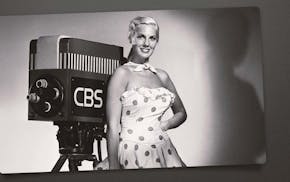Sriracha used to be one of those "secret" ingredients that chefs liked to keep under wraps. Years ago it was that special "hidden" flavor booster that gave sauces zip, added punch to mayonnaise and provided a fiery undertow to batters and broths.
But now the use of that fireball red chile sauce (in the green-cap bottle with the rooster emblem) is nearly as ubiquitous as salt and pepper. Not only is it omnipresent in restaurant kitchens, but it's in the home refrigerators of many chefs who use the chile elixir in their family cooking. And now it has invaded the American pantry.
So what is sriracha and why is it so popular? That's the subject of "The Sriracha Cookbook: 50 'Rooster Sauce' Recipes That Pack a Punch" by Randy Clemens.
The hot chile paste we know as sriracha can be traced to Sri Racha, a seaside city in the Chonburi province of Thailand, where the sauce is made with peppers, garlic, vinegar, sugar and salt. The sriracha that most of us know is an Americanized version of the sauce created in the early '80s by Vietnamese immigrant David Tran in Los Angeles.
Tran's company, Huy Fong (named for the freighter that took him from his homeland), produces the most prevalent and recognizable sriracha. Although several other brands made in Thailand can be found in American Asian grocery stores, Huy Fong dominates the market.
It has held Clemens in spicy thrall since he first tasted it. "I fell in love with it 12 years ago and I'd bring bottles to friends' houses to help spread the gospel," said the food writer, who is a graduate of the California School of Culinary Arts. "I started thinking about writing the book and got looking into the back story. It was fascinating."
Best advertising method
Tran's Huy Fong success story has been well documented. It truly is an example of great word of mouth, Clemens said, explaining how Tran made a Vietnamese-style pepper sauce he sold to Asian restaurants and markets in Los Angeles. "People started taking bottles home or swiping them from Vietnamese noodle shops. It just started spreading."
Eventually, Huy Fong sriracha could be found in Wal-Mart and was featured on cooking challenges on "Top Chef." It's now a fairly common condiment, right up there with salsa, ketchup and mustard. Huy Fong produces more than 14 million bottles a year.
A sauce of many purposes
Chefs are still finding novel uses for sriracha. Clemens said he's constantly on the prowl for great ideas. One too late to get into the cookbook is sriracha peanut butter cookies. "Why didn't I think of that?"
But there are plenty that did: sriracha pesto, sriracha green beans, sriracha coleslaw, sriracha tuna tartare, sriracha gazpacho, sriracha chilaquiles, sriracha and Spam fried rice, sriracha corn bread, sriracha macaroni and cheese, sriracha lamb kebabs, sriracha carne asada and sriracha and peach sorbet.
Sriracha's widespread acceptance is exciting to Clemens. The sauce's pleasing chile sting has opened a window to other spicy Asian flavors. "For me, it's a definite expansion into more spicy foods," he said. "I'm still a wuss. It's not like I can take it any better, but I can enjoy it. And I crave it."
It was once a center of Islamic learning. Now Mali's historic city of Djenné mourns lack of visitors
At Memphis BBQ contest, pitmasters sweat through the smoke to be best in pork
Landslide forces closure of iconic Southern California chapel designed by Frank Lloyd Wright's son

